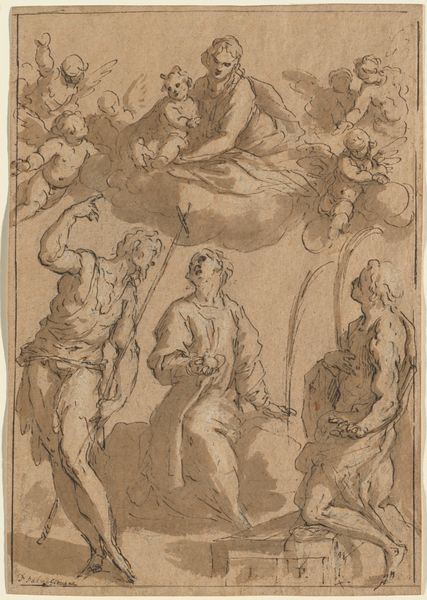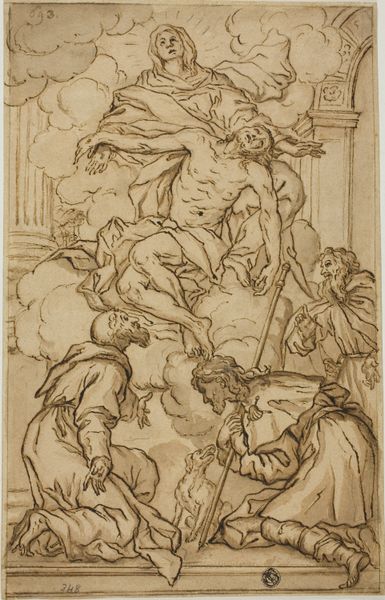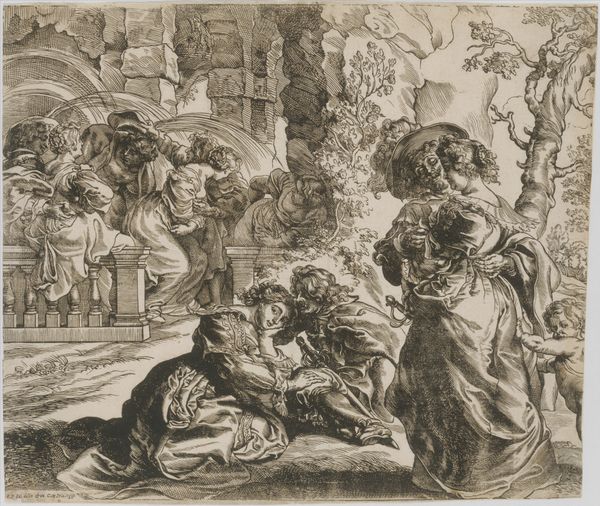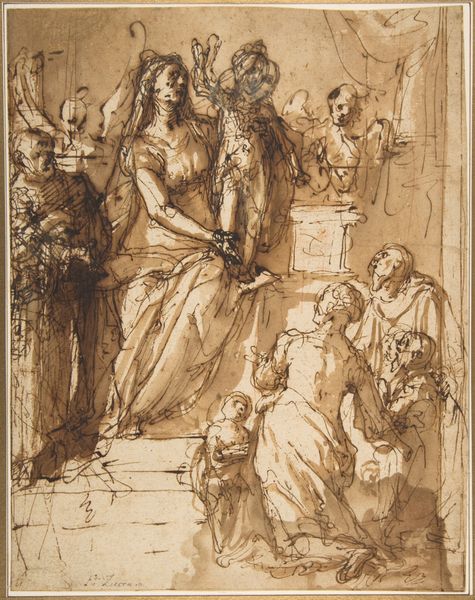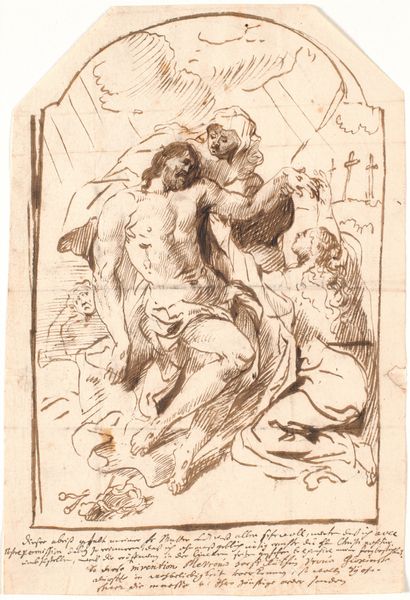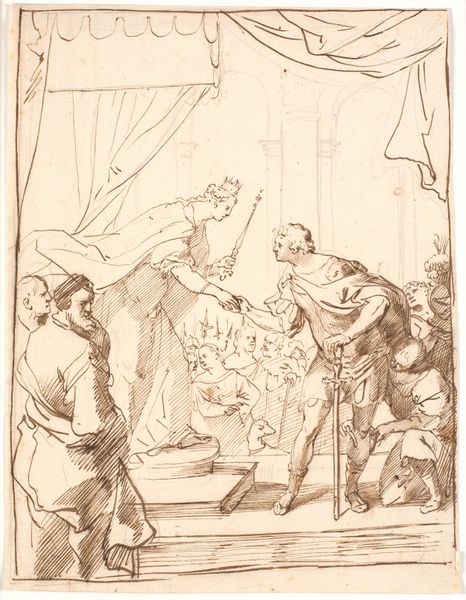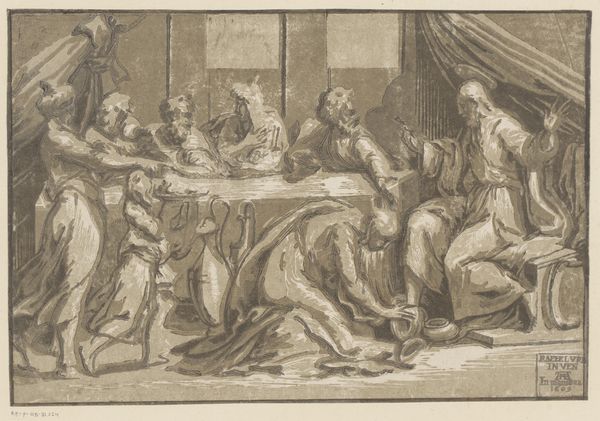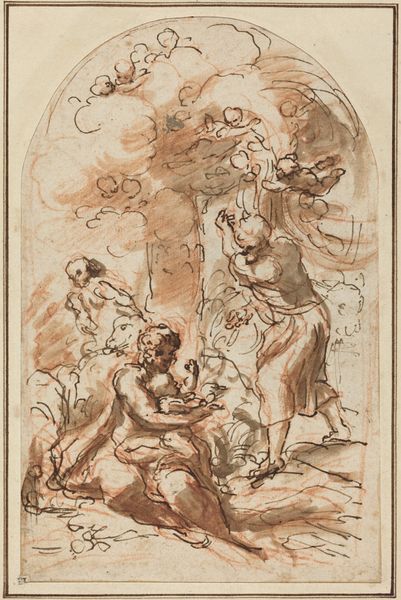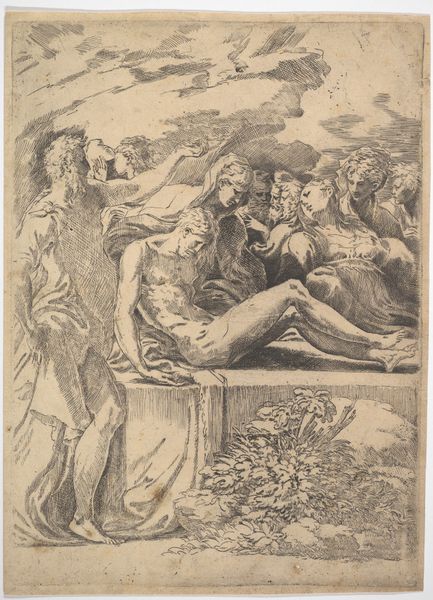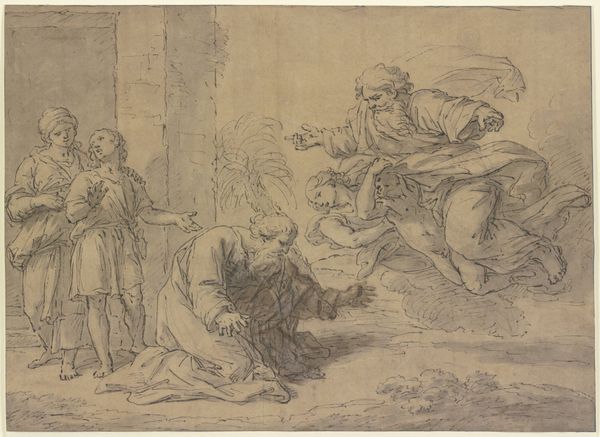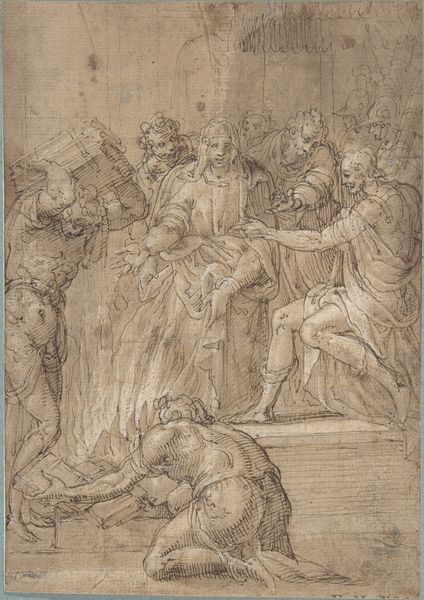
Dimensions: sheet: 17 11/16 x 21 13/16 in. (45 x 55.4 cm) plate: 9 3/4 x 8 11/16 in. (24.7 x 22.1 cm)
Copyright: Public Domain
This print, "The Miracle of Naim," was made by Adam von Bartsch sometime before 1821, using etching and engraving techniques. These processes involve cutting lines into a metal plate, inking it, and then pressing it onto paper. Bartsch, an Austrian artist and curator, was deeply involved in the techniques of printmaking. The etched lines give the image its structure, while the engraving adds depth and detail, particularly noticeable in the figures’ expressions and drapery. The sepia ink chosen by Bartsch provides a warm tone, enhancing the drama of the resurrection scene. Printmaking allowed for the wide distribution of images, making art accessible beyond the elite. Bartsch's expertise allowed him to make and distribute images widely, but it also reflects the labor and skill involved in producing each print. The subtleties of line and tone reveal the hand of the artist, making each impression a unique testament to his craft. Appreciating such nuances is a means to properly acknowledge both the art and the labor.
Comments
No comments
Be the first to comment and join the conversation on the ultimate creative platform.
